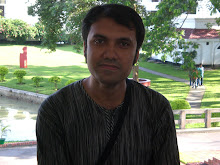Doctors: many monsoon deaths preventable
By Julhas Alam, Associated Press Writer
Aug. 11, 2007
DHAKA, Bangladesh - Josna Rani Das sat crying and clutching her husband's hand Saturday as she watched doctors struggled to find a vein on her unconscious eight-month old daughter.
Das' daughter, Mukti, was one of several thousand people brought to a special hospital in the Bangladeshi capital Dhaka that treats diarrheal diseases.
"The baby was minutes away from death," said Tahmeed Ahmed, a doctor, as he finally found the vein and inserted an intravenous saline drip to rehydrate the child. She survived.
At least 2,120 people have died this year in a particularly calamitous monsoon season in South Asia, double the number killed last year. Some 600 have perished in the past two weeks alone and on Saturday, officials said at least 40 people died.
Many of the deaths in the region could have been easily prevented, doctors said, blaming lack of access to basic medication and ignorance of how to treat the waterborne diseases that followed the deluge.
Ahmed said the case of Mukti Das, where the baby had been suffering from severe diarrhea and vomiting for five days before being brought to the hospital, was unfortunately typical among impoverished, illiterate villagers who mistrusted doctors.
"The illiterate parents initially do not take their babies to doctors, and it is often too late when they take them to the hospital," Ahmed said.
Also, ignorance about how to rehydrate people with diarrhea using an oral solution, or simply by drinking water with some sugar and salt mixed in, led to many preventable serious cases or even deaths, he said.
Most of the cases occur because people don't have clean drinking water and drink from stagnant pools left behind by the flood waters or from wells contaminated by filth washed in by the floods.
About 1,000 people have visited the hospital daily compared to about 150 before the floods, said Alejandro Cravioto, executive director of the International Center for Diarrheal Diseases and Research which runs the hospital.
To cope with the influx, tents were strung between palm trees on the hospital grounds. Inside, makeshift beds covered with plastic sheets were set up in rows as health workers went from patient to patient, giving them rehydrating solutions and putting cool water on their foreheads to bring down fever.
The devastating monsoon floods laid waste to much of northern India and Bangladesh over the last few weeks, killing thousands and displacing millions. More than 200 people have also died in Pakistan where the death toll from rains and a storm that struck southern Pakistan this week rose to at least 35 on Saturday, as buildings weakened by downpours continued to collapse.
Even as the waters drew back, doctors were still struggling to contain the diseases of the aftermath.
In the Indian state of Uttar Pradesh, "paramedics visiting affected villages don't have adequate supplies of medicines," said Ramakant Rai, chief of state's Voluntary Health Association. He said clean drinking water was running low.
Families lined up for aid finally reaching their villages.
Doctors have treated at least 1,500 people in Uttar Pradesh for diarrhea in the past 10 days, said L.B. Prasad, director-general of the state's health services. Rai's group said the scope of the suffering was greater, with more than 22,000 people contracting waterborne diseases.
In neighboring Bihar state, the government canceled vacations for doctors in flood-ravaged districts.
The monsoon rains are vital to farmers whose crops feed hundreds of millions of people. The monsoon season runs from June to September as the rains work their way across the subcontinent.
This year, the rainfall has been unevenly distributed across South Asia due to unusual patterns, India's Meteorological Department said. While parts of central India received less rain, the north faced stronger storms for longer than usual.
Thursday, May 15, 2008
Subscribe to:
Post Comments (Atom)

No comments:
Post a Comment